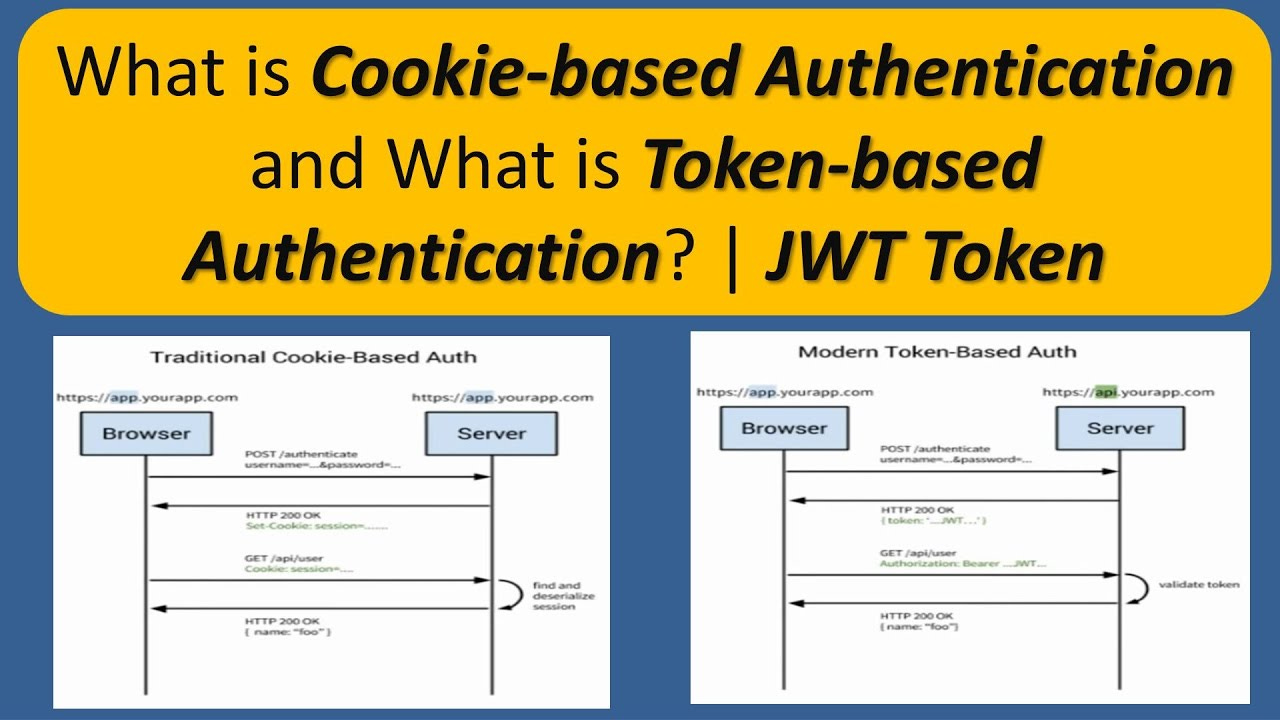Cookie VS Token based authentication
Cookie-based authentication and Token-based authentication are two common methods for handling user authentication in web applications.
While they both achieve the same goal of authenticating users and managing sessions, they differ significantly in terms of implementation, use cases, and underlying mechanisms.
1. Cookie-based Authentication
Cookie-based authentication relies on HTTP cookies to manage sessions. It is a stateful approach, meaning the server must maintain session data.
How It Works:
User Login:
The user provides credentials (e.g., username and password) to the server.
Session Creation:
If the credentials are valid, the server creates a session and stores session data in memory or a database.
A session ID is generated and sent to the client as a cookie.
Subsequent Requests:
The client includes the session cookie in the
Cookieheader for every subsequent request.The server validates the session ID from the cookie and processes the request.
Key Characteristics:
Stateful: The server keeps session information, which can grow as the number of users increases.
Relies on Cookies: Cookies are automatically sent with every request to the server, making them convenient for session management.
Limited to Same-Origin Requests: Cookies are tied to the domain and typically cannot be shared across different origins without additional configuration (e.g., cross-origin resource sharing (CORS)).
Advantages:
Automatic handling by browsers.
Compatible with traditional web applications.
Disadvantages:
Scalability issues: Maintaining session data on the server can strain memory or databases.
Vulnerable to Cross-Site Request Forgery (CSRF): Cookies are sent automatically with every request, which can lead to CSRF attacks.
2. Token-based Authentication
Token-based authentication relies on tokens (e.g., JWT - JSON Web Tokens) instead of server-side session storage. It is a stateless approach, meaning the server does not store session data.
How It Works:
User Login:
The user provides credentials to the server.
Token Creation:
If the credentials are valid, the server generates a token (usually a JWT) and sends it to the client.
Subsequent Requests:
The client includes the token in the
Authorizationheader (e.g.,Authorization: Bearer <token>) with every request.The server validates the token and processes the request.
Stateless:
The server does not maintain session information. All necessary data is encoded in the token itself.
Key Characteristics:
Stateless: The server does not store session information, making it easier to scale horizontally.
Tokens as Bearers of Information:
Tokens can include claims (e.g., user roles, permissions).
Commonly used tokens include JWT.
Cross-Origin Support:
Tokens are not tied to specific domains, making them ideal for APIs and Single Page Applications (SPAs).
Advantages:
Scalable: No need to store session data on the server.
Supports cross-origin resource sharing (CORS) without relying on cookies.
More secure against CSRF (tokens are not automatically sent by the browser).
Disadvantages:
Vulnerable to Replay Attacks: Tokens can be intercepted and reused.
Token revocation is challenging: Statelessness means there is no way to invalidate tokens without additional mechanisms like a blacklist.
Larger payloads: Tokens like JWTs can grow large if they contain a lot of claims.
When to Use Which?
Choose Cookie-based Authentication if:
You're building a traditional server-rendered web application.
You need to support legacy systems.
You want simpler session management with minimal client-side storage.
Choose Token-based Authentication if:
You're building an API-first application or a Single Page Application (SPA).
You need cross-origin resource sharing (e.g., multiple frontends accessing the same backend).
You require stateless authentication for scalability.
You want to include additional metadata (e.g., roles or claims) in the token.
Hybrid Approach
In some cases, you can combine the two approaches:
Use tokens for authentication but store them in secure cookies for better protection against XSS.
Implement server-side session tracking for critical actions while using stateless tokens for most requests.
Conclusion
Cookie-based authentication is best for traditional web applications where sessions are managed on the server.
Token-based authentication is more suitable for modern, scalable, and cross-origin systems like APIs and SPAs.
image source:-wikipedia


